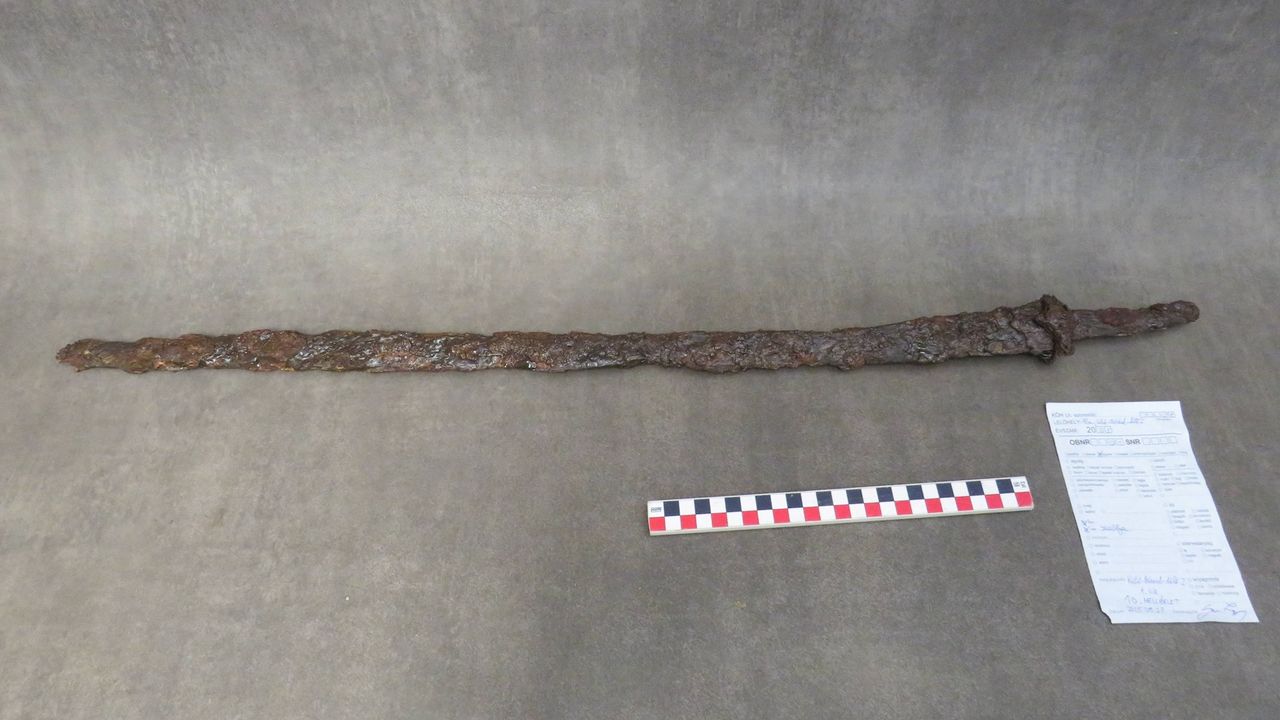In a remarkable archaeological discovery, experts in Hungary have uncovered an ancient warrior’s tomb containing an exceptionally rare iron saber, jewelry, and various artifacts dating back to the seventh century. Located near the city of Székesfehérvár, approximately 30 miles (50 kilometers) southwest of Budapest, the tomb dates between A.D. 670 and 690, a time when the region was part of the vast Avar Khaganate.
The excavation is part of the “Cemeteries from Space” program, an initiative by the Hungarian National Museum and the Szent István Király Museum, which utilizes satellite imagery to identify buried archaeological sites. According to a translated statement from the museum, the tomb was initially detected through crop marks visible from space.
Insights Into the Avar Culture
The Pannonian Avars, a confederation of semi-nomadic peoples in Central Europe, were instrumental in shaping the history of the region during this period. Historians, including Walter Pohl, detail in “The Avars: A Steppe Empire in Central Europe, 567-822” that this group established a formidable kingdom in the Carpathian Basin. The historical context reveals that the Pannonian Avars had no written language, making their culture particularly enigmatic. Recent genetic studies indicate that the women of this society often moved to their husbands’ villages upon marriage, shedding light on their social practices.
The artifacts discovered include the elegantly curved iron saber, which is associated with mounted warriors. Despite its poor condition, the sword exhibits traces of intricate decorations, showcasing the high level of craftsmanship of the time. Archaeologists noted that although signs of looting were present, the tomb still contained a rich array of grave goods.
Unearthing Artifacts and Human Remains
In addition to the saber, excavators found a silver brooch and gilded metal ornaments believed to have been woven into long hair. Other items recovered include silver belt fittings, glass bead earrings, a long knife, and numerous arrowheads, likely stored in a quiver that has since decayed. The warrior’s remains were also located within the tomb, revealing anatomical order in the arrangement of his arms and lower body, while his head, chest, and abdomen showed signs of significant disturbance due to looting.
The tomb’s contents contribute to a growing understanding of the Avar Khaganate and its interactions with neighboring civilizations, including the Byzantine Empire, the Franks, and the Bulgars. According to historical records by Menander Protector, the Pannonian Avars were often mistakenly identified with Central Asian Avars, leading to widespread fear among Byzantine officials.
This discovery not only enriches the historical narrative surrounding the Avar empire but also highlights the sophisticated metalworking skills present during the Iron Age. As archaeological efforts continue, each find contributes to piecing together the lives and customs of a culture that has long remained shrouded in mystery.
The findings from this tomb offer invaluable insights into a time when various cultures coexisted and interacted in Central Europe, shaping the region’s historical landscape.







